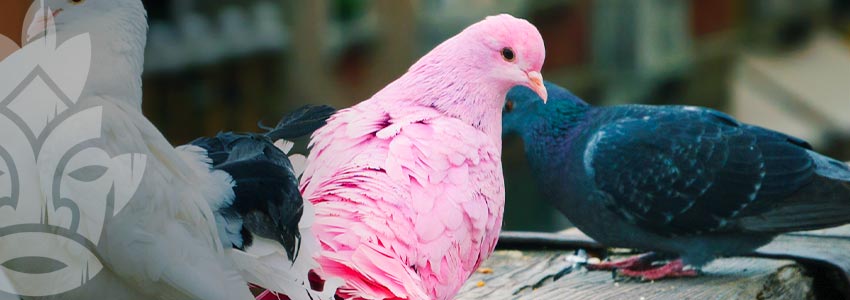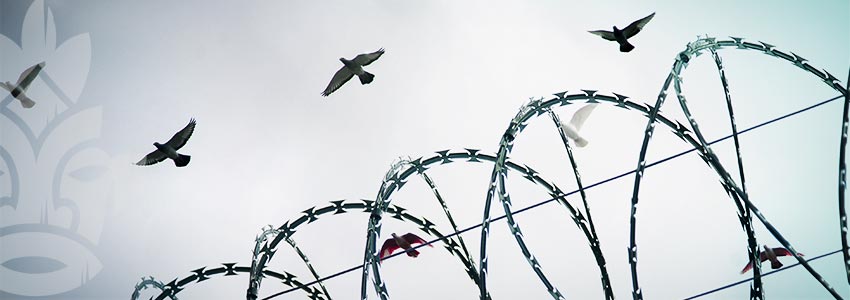Don't have an account?
Register NowYou have to add to cart at least 5 bottles or any program to make checkout.
- BlogPigeons Smuggling Illicit Substances: The Facts
Pigeons Smuggling Illicit Substances: The Facts
Published: March 30th, 2023
Categories:
News
Criminals have their sly and ingenious ways of smuggling drugs and other contraband into prison. Some do it through the people visiting them, while others rely on packages and mail sent to them.
But what may seem like an outdated method has actually seen a resurgence in the present day. The medium of choice? Pigeons. Indeed, these seemingly unsuspicious birds have been the drug mules of smugglers worldwide for quite some time. Some of these ventures have worked, while others were quickly thwarted by law enforcement.
Today, we’ll discuss the rather colourful stories of modern-day drug-smuggling pigeons.
Instances of Pigeons Getting Up to No Good
Throughout recent history, there have been several events in which pigeons were proven to be accessories to drug-related crime. And these instances aren’t localised to just one part of the world. On the contrary!
Costa Rican “Narco Paloma”
Back in 2015, Costa Rican authorities **seized a pigeon smuggling contraband into a prison. Dubbed “Narco Paloma” (which translates to “drug dove” in English), the bird was found carrying 14 grams apiece of cannabis and cocaine in a small backpack.
According to reports, prison guards believe that the pigeon was trained by inmates to do their drug runs. And as stated by the prison police director, such occurrences are nothing new. In the past, inmates used other animals like cats and dogs to carry drugs into the facility.
Narco Paloma has since been taken into the custody of the Rescate Wildlife Rescue Center, and will likely remain in captivity for good.
And this isn’t the first time a bird was used as a drug mule in the Central and South American region. Two years later in Argentina, police officers shot down a bird delivering cannabis, pills, and a USB drive, while in 2011 in Colombia, a carrier bird was discovered on its way to deliver a huge 45g package of contraband. The authorities believe the package was too heavy for the bird to finish its journey.
Indian Spy Pigeon

We’ll now shift our attention to a non-drug-related incident that occurred in 2020 in India. In this case, it is believed that an alleged spy pigeon was groomed in Pakistan to deliver secret messages across the border.
According to reports, the pigeon was painted pink and had a coded ring on it, along with “alphabets and numbers” written on its body. And while it is unclear whether the bird was intended for spying use, the number tags found on the bird are believed to be a symbol of Pakistani ownership. The pigeon was eventually captured by people in Manyari, a village near the Indian–Pakistan border.
Canadian Meth Pigeon
In December 2022 in Vancouver, Canada, authorities captured a pigeon carrying a small fabric backpack containing crystal methamphetamine. According to reports, the bird was captured as it was hovering over a yard in the detention facility.
For Union Correctional Officer President John Randle, such an occurrence is brand new, something he’d never seen in his 13-year career. For him, such a tactic makes sense since drones tend to draw more suspicion.
Randle also states that the use of pigeons to smuggle illegal substances, particularly into prison, should be treated as a “massive concern”. He believes that immediate action should be taken, as having drugs inside the prison system is a “scary” reality.
Kuwaiti Pill Pigeon

Kuwait is a country known for its strict drug laws. Possession of an illegal substance warrants a minimum of five years in prison and a maximum of ten. It also includes a hefty fine.
Given these stringent measures, criminals have relied on pigeons to transport their products. This particular strategy came to light in 2017 when one of the winged drug mules was nabbed by authorities. The bird was carrying a tiny backpack containing 178 pieces of pills believed to be ecstasy, according to news reports.
The bird was spotted as it was flying from neighbouring Iraq. Police officers eventually caught the pigeon above a building near customs.
Russian Smuggling Pigeons
If we were to trace the origins of modern pigeon-drug-smuggling practices, we would be led to Russia in 2006. It is here, at a prison camp in the southern city of Astrakhan, that smugglers would apparently place pigeons inside a plastic bottle, along with a shipment of certain narcotics, and then throw the bottles over the prison walls at a specific time they all agreed on.
Inmates would then pick up their packages and send back the payment through the pigeons. It was a slick and effective operation until law enforcement caught up with it.
Drug Smuggling Pigeons: Unexpected Accomplices

One of the main reasons pigeons are used as drug mules is because they can carry packages that weigh up to ten percent of their body weight. Since they weigh up to 500 grams, they can carry a maximum load of 50 grams.
Given that load, pigeons are also believed to have the capability to carry up to €3,500 worth of drugs ($3,100). That is quite a hefty amount for a small, seemingly inconspicuous bird to transport. Furthermore, homing pigeons are known to be able to travel long distances, and for their ability to return back to the same location.
Society has been technologically advancing at an exponential rate. And since “high-tech” crimes have been rampant, law enforcement has begun to catch up. This has made criminals resort to more old-school tactics, which have, in some instances, proven effective. With that said, is the role of pigeons as messengers and drug mules here to stay? Time will tell.





